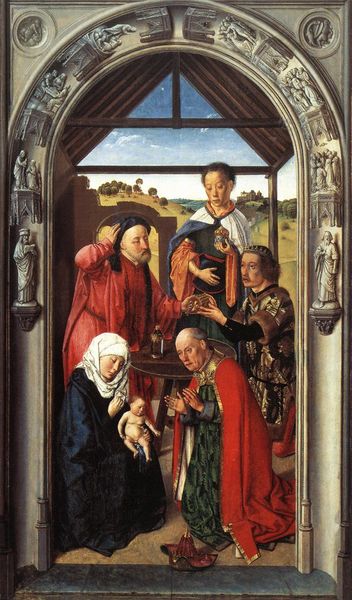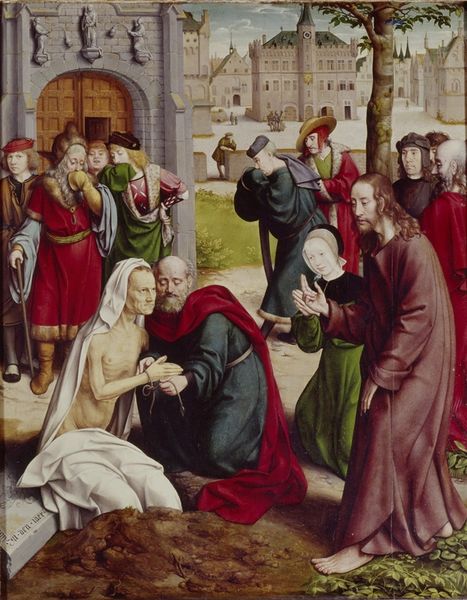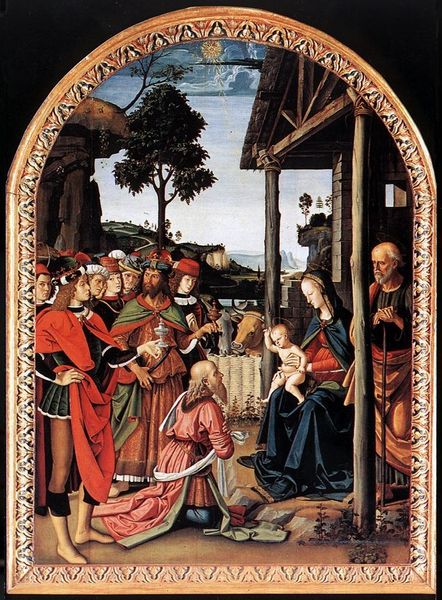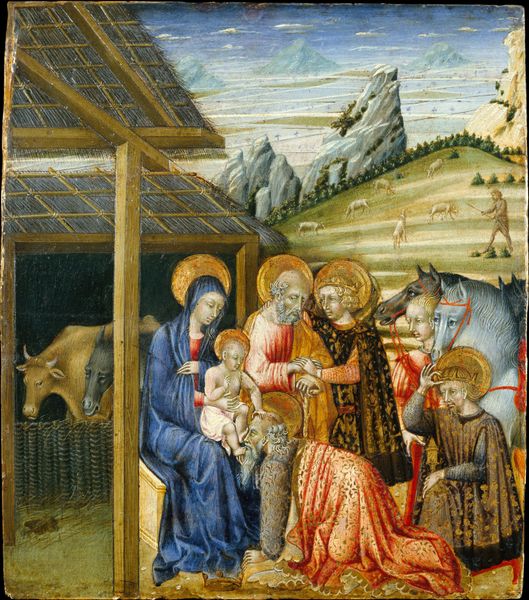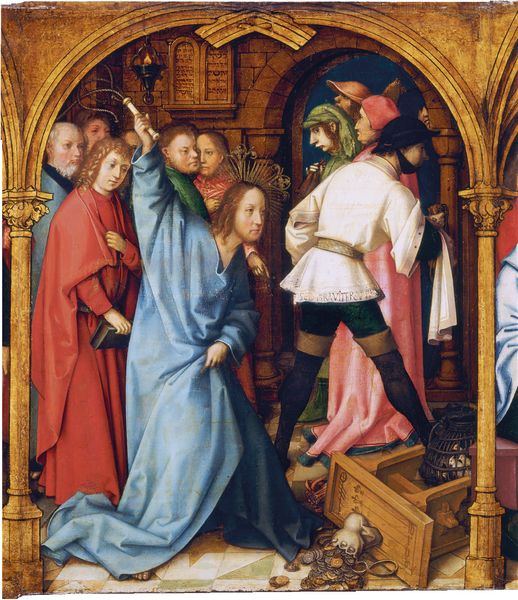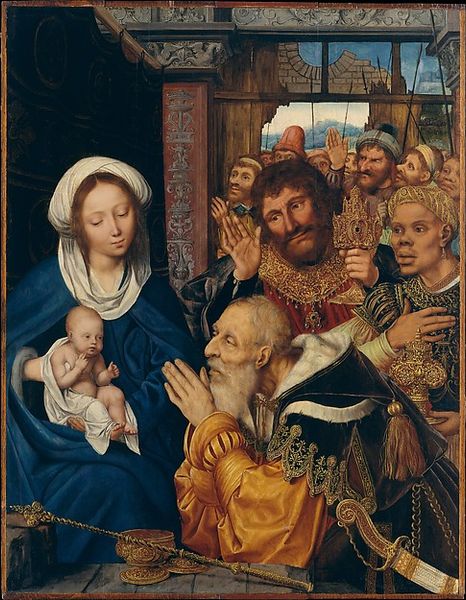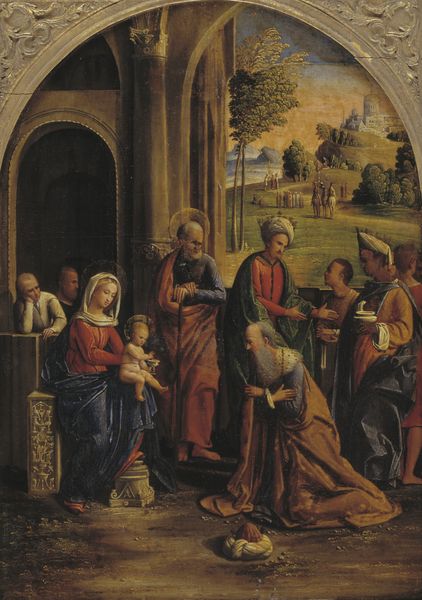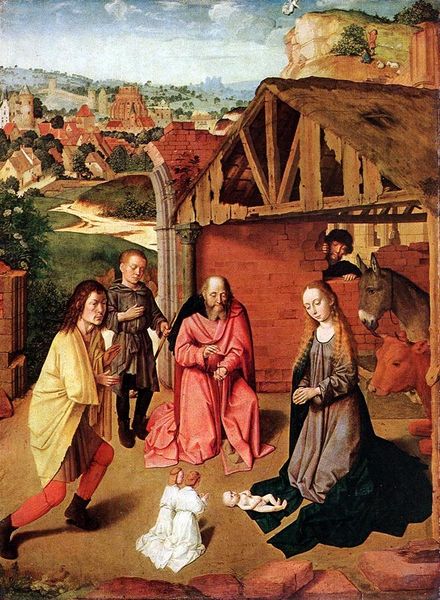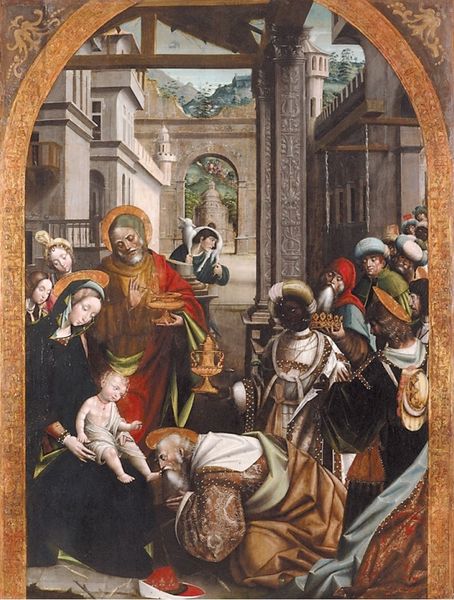
oil-paint
#
portrait
#
oil-paint
#
figuration
#
oil painting
#
underpainting
#
history-painting
#
northern-renaissance
#
portrait art
Copyright: Public domain
Curator: Here we have Jacques Daret's "Adoration of the Magi" painted around 1435, executed in oil on wood. It's currently part of the collection here at the Gemäldegalerie in Berlin. Editor: It’s incredibly vivid. I’m immediately struck by the richness of the colors, particularly the reds and blues in the fabrics, and the way the gold leaf catches the light. Curator: Absolutely. The layering of oil paints, visible especially in the figures’ robes, speaks to a meticulous workshop process. We see here how Daret is experimenting with representing textures – the fur trim, the polished metal of the sword. And the way light interacts with those material surfaces suggests considerable skill in controlling his medium. Editor: Yes, and consider the composition. The positioning of the Magi, their placement in descending order and the deliberate focus of the kneeling figure drawing the viewer's attention immediately to the Christ Child in Mary's arms. These wise men bear gifts but also act as intermediaries; this imagery seems intent on portraying not just veneration, but a clear message of the Church as a link between earthly authority and divinity. Curator: Indeed. This representation emphasizes material wealth used in religious context. The costly fabrics, crafted metals of the Magi’s gifts are signifiers of economic power. This work reflects the social landscape of the time - religious expression heavily shaped by, and showcased through, luxury. Editor: And that single star... that blazing star which seems almost an unmissable, singular beacon in the narrative and above everything. The artist’s careful choice positions divinity both literally and figuratively above all other things depicted. It seems less like just telling a story and is more about conveying complex, nuanced layers of power structures during that time. Curator: Looking closer, even the landscape beyond reflects a social order—hints of travelers, workers…life goes on, juxtaposed with this singular moment of adoration. These details underline how profoundly everyday existence and spirituality were entwined. Editor: What resonates with me most is the enduring capacity of art to transform history into resonant symbols and shapes, even those seemingly captured within familiar, devotional tales. Curator: For me, it's appreciating Daret's manipulation of oil paint that lets the social fabric of the period speak directly across the centuries.
Comments
No comments
Be the first to comment and join the conversation on the ultimate creative platform.
